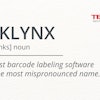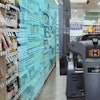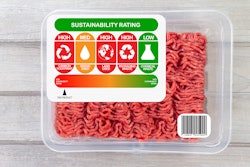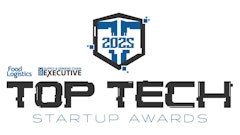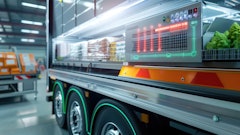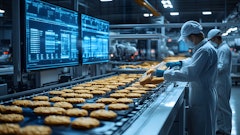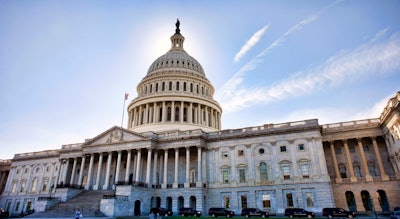
The New Normal… a phrase created shortly after the pandemic to signify the new way of doing business.
But for many supply chains, that “new” way of doing business changes constantly, forcing decision-makers to continuously pivot.
In Food Logistics’ Nov/Dec 2022 issue, editor-in-chief Marina Mayer talks with industry experts about what the return to normalcy in the supply chain space looks like and what’s in store for global cold chains come 2023.
Here’s an interview with Tom Madrecki, VP of supply chain and logistics, Consumer Brands Association, who details why government needs to play a bigger role in investing in manufacturing, addressing key gaps and supporting infrastructure, with excerpts publishing in Food Logistics’ Nov/Dec 2022 issue. [CLICK HERE to read the article in full].
Food Logistics: 2022 saw a lot of instability within the supply chain. Port strikes, rail strikes, driver shortage and more. Industry experts even predict it may take supply chains close to 2-3 years to turn around. From your vantage point, what does the state of the supply chain look like next year and the years ahead?
Tom Madrecki: Instability and disruption are the new normal. We must acknowledge the inevitable and shift our focus not only to building more adaptive, responsive and resilient supply chains, but addressing the systemic factors that contribute to ongoing risks and rising costs. The private sector is doing its part to meet the moment. With renewed appreciation that supply chain performance is a key differentiator in the marketplace, companies are placing a premium on innovation in that space. Government stakeholders must also recognize this critical moment and take steps to strengthen the U.S. supply chain. Specifically, government has a role in investing in manufacturing; addressing key gaps in transportation and logistics services; increasing end-to-end visibility; and ensuring that physical and data infrastructure delivers for companies and consumers.
Food Logistics: What are some of the main trends or challenges set to disrupt supply chains in 2023 (be specific)?
Madrecki: While there is no crystal ball to say when these challenges will end or what will drive them in the new year, we have an idea of what influences them. As the industry continues contending with a labor shortage and consumer demand that has exceeded even March 2020’s panic-buying levels for more than a year, the supply chain will continue to be strained well into 2023 at minimum. On top of these ongoing issues, any disruption will exacerbate challenges, from severe weather to global crises. But the biggest risk is our own inaction. Slight moderation in costs or reduction in congestion at ports is not victory, and declaring pandemic-era supply chain disruptions solved is the worst thing we can do. The pandemic revealed major supply chain issues that have resulted in strong proposals — proposals that have been put on the shelf by policymakers. With supply chain issues that threaten to return at any time, Congress needs to act now on solutions.
Food Logistics: The cold food chain continues to face a host of risk/security challenges. What can companies be doing now to adapt for the future?
Madrecki: While visibility and end-to-end traceability technologies may garner many of the headlines in the cold chain space, I’d offer that the name of the game remains “capacity, capacity, capacity.” On the one hand, you have incredible demand for cold chain services; on the other hand, a more limited pool of warehousing, logistics and trucking service providers. That’s a recipe for scarcity in the marketplace. It’s also ample cause for investment, innovation and new operational models that give companies a leg up or allow them to mitigate risk. It’s about coming to the table with a clear strategy and leaning into that environment.
Food Logistics: Drones, autonomous vehicles and other cutting-edge technologies are making headlines in logistics. How do they impact the future of supply chains?
Madrecki: At the outset, let’s acknowledge that there’s no silver bullet to supply chain challenges, and that several of these technologies remain aways off from becoming reality. But that takes nothing away from their promise to transform how companies do business and the potential to increase efficiency, lower costs, enhance sustainability and more. They all must be tools in the toolbox. Supply chain professionals will need to have a comprehensive mindset to deploy innovation to close business gaps. The fundamental goals of supply chains don’t shift, the “how” will.
Food Logistics: The labor shortage is a real thing, and it’s impacting several facets of the supply chain. What is your company – or what should companies – be doing to hire, onboard and retain good quality supply chain workers?
Madrecki: The CPG industry is contending with a lingering labor shortage making it challenging to meet sky-high consumer demand. Our member companies are making changes to traditional workplace models to accommodate the seismic shift in worker attitudes that makes it increasingly difficult to fill jobs and retain workers. Employers are striving to enhance quality of life through more flexible schedules that provide consecutive days off or the option for employees to pick their own hours. Companies are utilizing new recruitment methods, such as direct mail, and reaching out to potential employees from previously untapped demographic groups and geographic areas, expanding their recruiting pools. Many are investing more heavily in worker retention programs, especially in the first few months of employment, by offering progressive increases in pay or more vacation time up front.
Food Logistics: Sustainability continues to be a core part of many companies’ supply chain strategies. What’s most important in achieving that ultimate sustainability footprint?
Madrecki: Companies are making substantial sustainability commitments. A particular challenge is reducing emissions. Moving the needle will require coordination across sectors and with policymakers. If we really want to see change in that space, meaningful steps will need to be taken, including allowing higher truck weight limits to reduce the number of vehicles on the road, the broad deployment of EV and AV heavy duty trucks and investment that seeds development of new operating models and alternative delivery methods. The role of government in that cannot be understated. Companies can’t do this alone, which is why Consumer Brands is advocating for many of these changes that will accelerate a more sustainable supply chain future.
Food Logistics: The influx of e-commerce put supply chains in the spotlight to pivot or fall behind. What can companies do to re-tool their warehousing and transportation tactics?
Madrecki: Our member companies are transforming their operations to enhance resilience in today’s unstable supply chain environment. Some strategies include investing record capital into added capacity, locking in shipping schedules further in advance, tightening timelines for sourcing ingredients and utilizing new suppliers and alternative transportation options. Likewise, they’re strongly considering the role of visibility tools and data to make quick adjustments and strengthen overall supply chain performance.
Food Logistics: What are some things not addressed above that may be pertinent to our readers?
Madrecki: Supply chains were front-page news throughout the pandemic. As some aspects of the pandemic wane and attention shifts to other issues, we can’t afford to let supply chains fall into the rearview. And you’ll note that they are still visible with every weather event, geopolitical issue and labor challenge. We are right back to a threatened supply chain because we have not had the time to catch up and build needed resiliency. They remain a key differentiator in the marketplace for companies, and an area of underinvestment and underappreciation for policymakers. Companies must keep strategic supply chain conversations going at the C-suite level, which is one of the reasons Consumer Brands recently launched its supply chain network for leaders in the space, to discuss both challenges and opportunities to accelerate (like the Freight Logistics Optimization Works initiative and the new Office of Intermodal Freight at the U.S. Department of Transportation). The stakes have never been higher, but so is the opportunity if we apply the right level of prioritization and investment.
[CLICK HERE to read the article in full].



